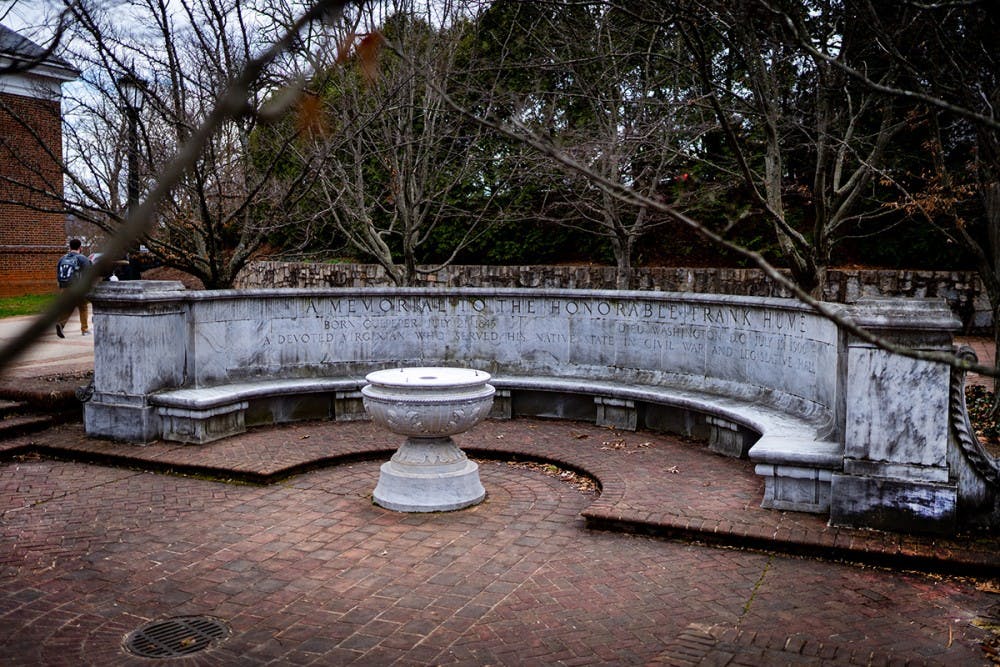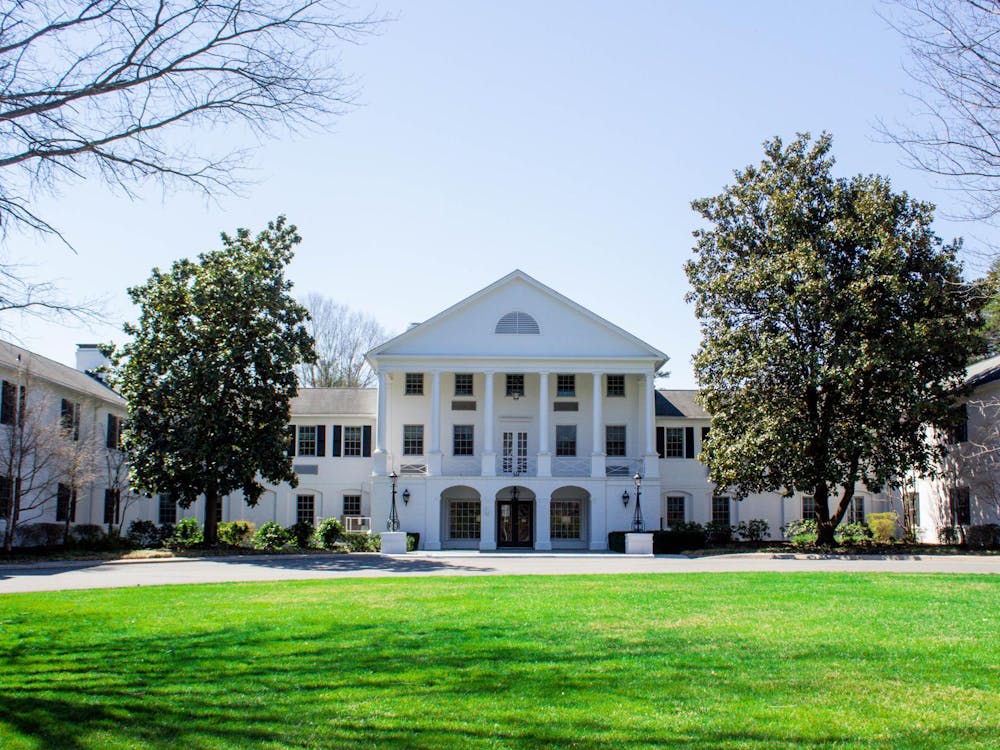Between Monroe Hall and Brown College there is a relatively inconspicuous curved wall and fountain — more known for its unique ability to carry whispers than for its tarnished history. The inscription on it reads “A MEMORIAL TO THE HONORABLE FRANK HUME — A DEVOTED VIRGINIAN WHO SERVED HIS NATIVE STATE IN CIVIL WAR AND LEGISLATIVE HALL.” With some deduction, one will soon realize that Hume fought for the Confederacy during the Civil War.
Leaving D.C. and crossing through Union lines in July 1861, Hume made great effort to join the Confederate war machine. He fought in a total of 11 battles against the Union Army in addition to his service as a spy — all to defend the Confederacy’s ideals of slavery and white supremacy. Following the war, Hume moved back to D.C., started a successful grocery business and became active in Virginia politics. He held multiple reunions for his Confederate unit at his home, Warwick estate, and adorned the property with cannons from the war.
Some may say that Hume’s career following the war in business and politics effectively nullifies his service to the Confederacy — I vehemently disagree. Hume romanticized the war, even after its conclusion, through social events that he held with his unit and the purchase of war memorabilia such as cannons. These actions illustrate that he was anything but ashamed of his service to support slavery.
Almost 30 years after Hume’s death in 1938, the Hume Fountain — now the Whispering Wall — was dedicated for his service to the Commonwealth. The fountain was designed by Edmund Campbell, then dean of the Architecture School, and illustrates the connection between the University administration and admiration for the Confederacy. However, the history of the monument has been relatively forgotten.
Today, we rightfully call for politicians who wear blackface to resign and we rightfully shame those who wear the confederate flag with pride, but, strangely enough, we allow memorials to stand for those who would put their life on the line to uphold institutional racism. Other localities have been taking different steps to reverse the exclusion that these memorials inherently impress. Alexandria — the city where Hume conducted much of his business following the Civil War — has removed the street signs named after him. These signs, representing a more discreet form of memorialization have been removed while our own more blatant form still stands.
Historically, the majority of confederate memorials in Charlottesville have been devices in an attempt to intimidate black communities — a way to spur gentrification. About a decade before the construction of the Whispering Wall, University President Edwin Alderman dedicated the Robert E. Lee statue in downtown Charlottesville at its installment. The statue’s proximity to the predominantly black community of Vinegar Hill sent an unwelcoming message to those living there. Other monuments and memorials related to the Confederacy in Charlottesville have this same history — one of intentional oppression. And although the Whispering Wall may not have this same underlying motive of intimidation due to its location inside the University Grounds, we cannot deny the similarity and the connections it holds.
We must attempt to create a more inclusive environment and we must attempt to heal the past — a great place to start would be the removal of the Whispering Wall.
Some may dispute the removal as they feel the memorial should just be “recontextualized” through the placement of a plaque identifying Hume’s role in the Confederate Army. However, I feel this fails to grasp the placement of the memorial — one could simply miss a plaque clarifying Hume’s role in the confederacy or bother not to read it. In order for something to be “recontextualized,” it must be placed in an environment that supposes context, such as a museum or exhibit.
At a University where unmarked enslaved people’s graves are commonplace, where eugenics was funded and furthered, where fraternity brothers continue to appropriate cultures, we must ask ourselves, how do we want to remember our history? Do we want to memorialize those who marginalized or those who were marginalized? I choose the latter.
Hunter Wagenaar is a second-year student in the College and a Student Council Representative-elect.







